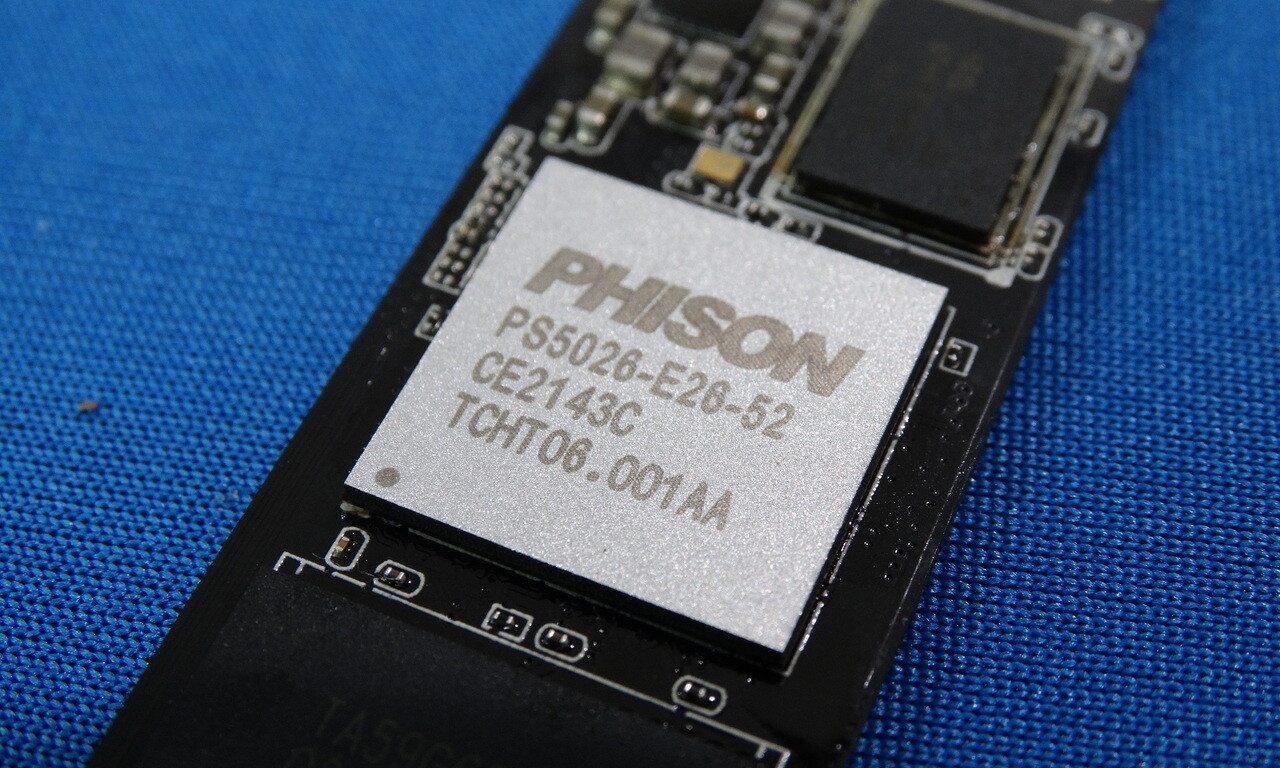
E26 controller chip is ready to go.
Phison is showing off its latest PCIe Gen 5 SSD controller chip, known as the E26, at CES including providing access to a fully functioning demo drive. Apart from increased peak performance of over 10GB/s for both reads and writes, the big news for gamers is proper support for Microsoft’s DirectStorage tech.
The latter is designed to accelerate in-game storage performance and make level loading and in-game content streaming much faster.
As we reported last year, Gen 5 SSDs are already overdue. So it’s good that Phison, perhaps the biggest supplier of third-party controller chips to the SSD industry, is pushing on with its Gen 5 tech in the E26 controller chip.
The engineering drive Phison is showing off is a little constrained by the NAND flash in use. With Micron 232L NAND clocked at 1600 MT/s, it’s running well below the 2400MT/s the chip is capable of supporting. So, peak throughput of around 10GB/s for both reads and writes is some way off the 14GB/s we’ll eventually see with Gen 5 drives (Phison says the E26 tops out at 14GB/s for reads and 11.8GB/s for writes).
However, it’s arguably other areas of performance that are more critical, day-to-day. One is 4K random access. By the specs, the E26 is good for 1.5M read IOPS and 2M write IOPS, which is an improvement, albeit not a massive one, on existing PCIe Gen 4 controllers.
Phison has released this snapshot of E26 performance paired with 1600MT/s NAND flash memory. (Image credit: Phison)
In its own internal benchmarking, Phison is claiming 100MB/s for 4K QD1 reads and over 400MB/s for writes. The latter is particularly impressive compared to the best Gen 4 drives, which come in under 300MB/s. The 4K reads are a bit disappointing compared to the circa 80MB/s of Gen 4 drives. It’s also worth remembering that Intel’s dearly departed Optane P5800X can do 400MB/s 4K reads and writes over a PCIe Gen 4 interface.
The other part of the puzzle is the aforementioned DirectStorage technology. In simple terms, DirectStorage moves game data decompression from the CPU to the GPU, simplifying and accelerating the process of loading data like graphical textures from the SSD. Microsoft says game level load times can be improved by 40% . DirectStorage should free up CPU resources for actual gameplay and allow game levels to load seamlessly in the background during gameplay as opposed to punctuating play with specific moments for loading new levels.
Phison says the E26’s I/O+ Technology is specifically designed with DirectStorage in mind. As for how much benefit that brings, Microsoft has developed a synthetic benchmark to test DirectStorage. Known as Expanse, it tests texture streaming. Early results indicate that the E26 engineering drive delivers over 7.5GB/s of texture streaming bandwidth. The fastest Gen 4 drive, the Sabrent Rocket 4 Plus hits 7GB/s, while the WD SN850X clocks 6.3GB/s.
Exactly how much difference all of this will make to gaming performance is yet to be determined. And it’s likely that the performance of Gen 5 drives will improve pretty dramatically over time. So, this early look at Gen 5 performance is far from definitive.
But with both Intel and AMD platforms now supporting PCIe Gen 5, it’s good to see that the SSD half of the equation seems to be progressing nearer to actual availability, even if Phison isn’t putting an exact date on when we’ll see the first drives. Given that Phison itself doesn’t sell drives, that bit isn’t really under its control.






